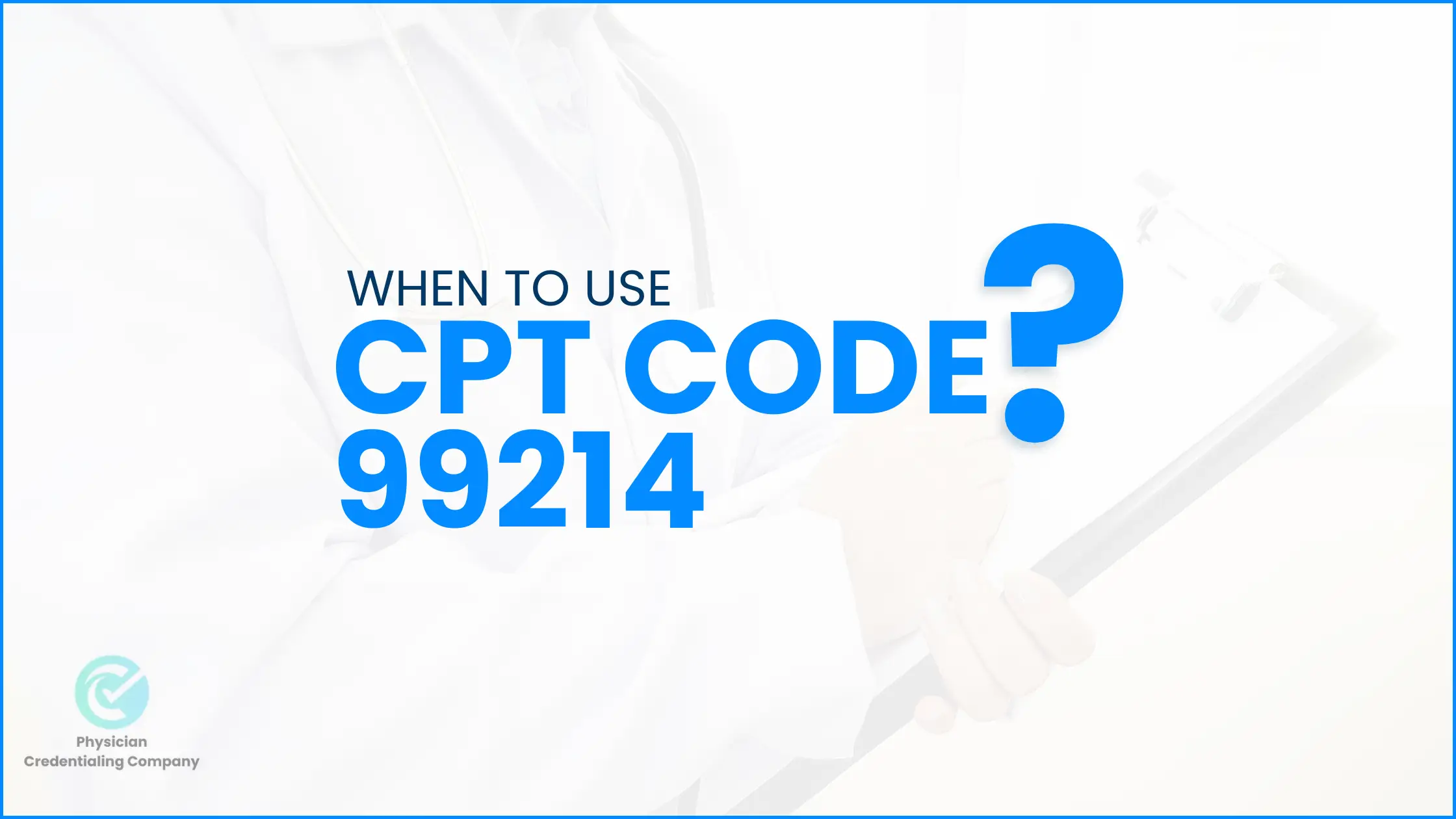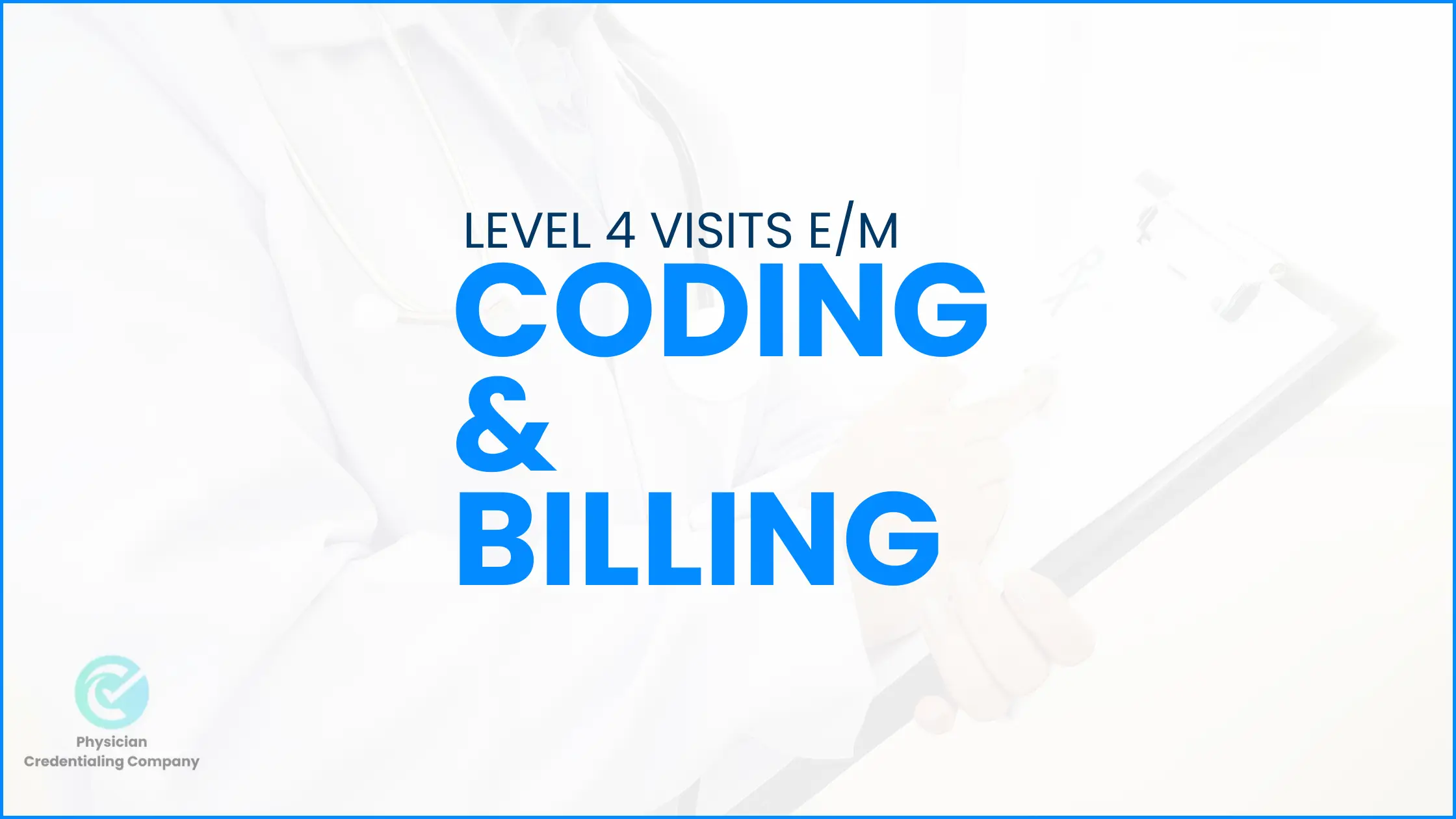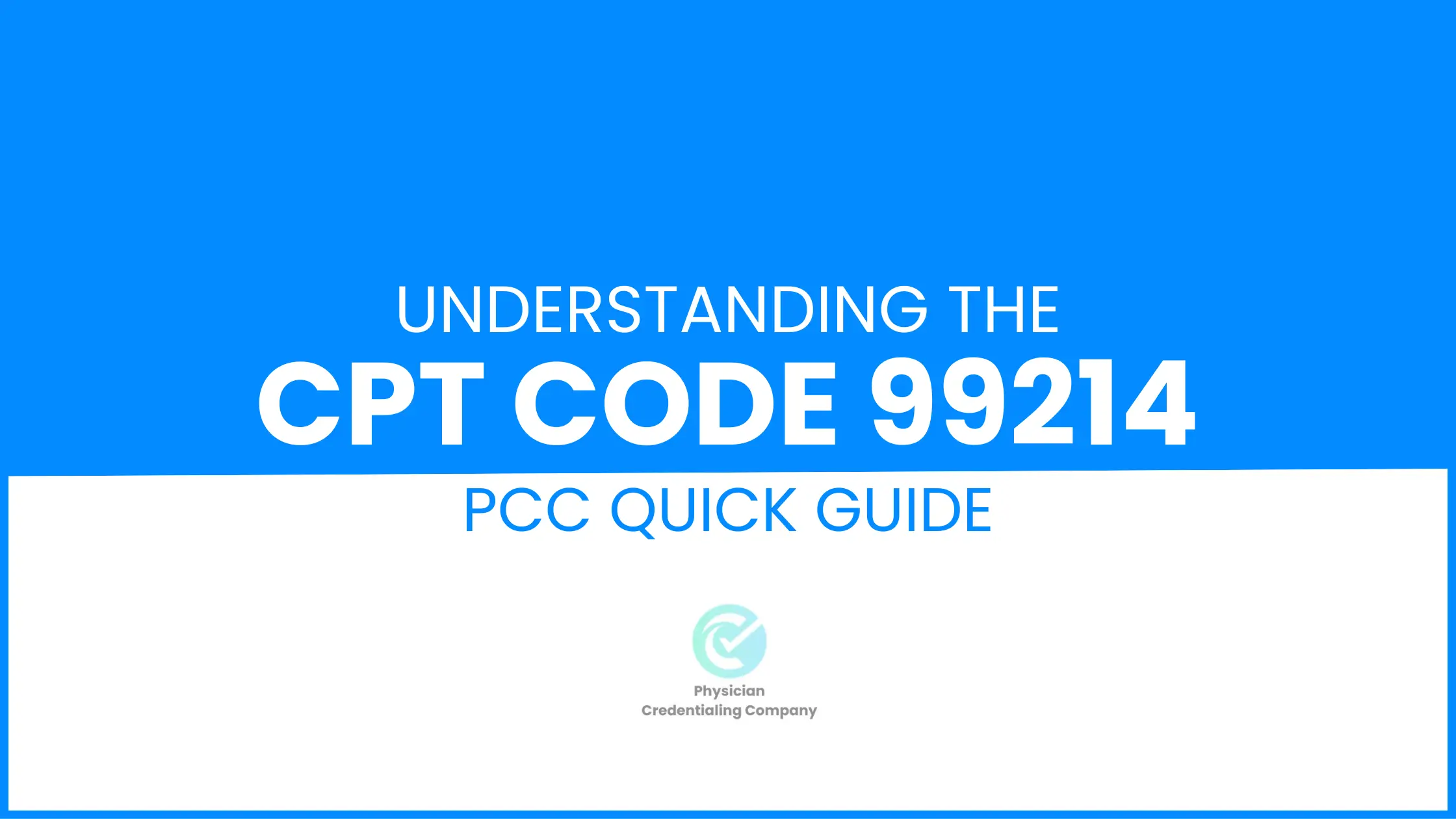In the healthcare sector, healthcare organizations and practitioners provide medical services to patients and ask for reimbursement in return from the insurers. Current procedural terminology (CPT) codes play a crucial role in the effective medical coding and billing process. There are many codes assigned for the service provided to the patients, and CPT code 99214 is very important for billing office or outpatient medical patient visits.
In this article, the PCC guide will help you learn the clinical criteria required to bill for the 99214 CPT code. You will also be able to learn the significance of accurate billing for code 99214 in the hospital setting. We will also discuss common mistakes to avoid in documentation and billing processes to enhance the efficiency and accuracy of the whole process.
Understanding of CPT Code 99214
Current Procedural Terminology (CPT) codes are standardized sets of codes maintained and introduced by the American Medical Association (AMA). Each code is composed of five digits, and these codes are used to describe the clinical, surgical, and diagnostic services provided to the patient. CPT code 99214 is used for billing the services provided during office or outpatient visits for the evaluation and management of an established patient. It has a specific time duration for patient-doctor interaction and the severity of disease and decision-making.
Established patients are those who have received some sort of medical care from physicians in the same care center within the last three years. It is not important to get medical service from the same physicians to become an established patient. Patients should only interact with the same hospital.
99214 code describes the specific medical service, and it is necessary for the generation of accurate medical bills. This code is used to bill insurance companies and get reimbursements for the medical services they provide. There are a few key characteristics of the CPT code 99214 that should be known by healthcare professionals:
- Patient type should be established.
- Patient visits should be in the office or outpatient department.
- Face-to-face doctor-patient meetings should be of 30-39 minutes to comply with this code.
- There is moderate complexity in decision-making.
When to use CPT Code 99214?
CPT code is required to be used when the patient comes into the outpatient or office with one or two chronic conditions or having new disease symptoms that need to be evaluated and managed. There is always moderate severity of medical decision-making along with detailed history and detailed examination. There are a few components of the 99214 CPT code, which are described below:

1. Detailed History
History is the cornerstone of making a diagnosis for the symptoms a patient comes into the hospital. History includes a few steps that should be followed thoroughly to meet the clinical criteria for this code. Patient biodata and chief complaints should be noted and documented. It is important to note the clear and concise symptoms a patient describes.
The next step is taking a history of presenting illness, in which detail of each symptom is asked and noted. This is the most important step to reach the diagnosis. Associated information like onset, duration, severity, exaggeration factors, progression, and relieving factors should be noted after asking different questions from the patient. Differential diagnoses are made on the history of presenting illness which are further evaluated on investigatory tests.
A systematic review is also included in the 99214 CPT code. Physicians need to get a systemic review of each system cardiovascular, gastrointestinal, CNS, and musculoskeletal for any potential findings in history. Family history, socioeconomic history, drug history, and past medical history are also important in this code. These should be properly documented to comply with AMA regulations.
2. Detailed Examination
CPT code 99214 comes with a detailed examination of body systems relevant to the disease symptoms. It is important to examine and assess at least six body systems or organs. First of all, the systems relevant to the symptoms are examined first. For instance, if a person comes in with shortness of breath and cough, then the respiratory system is examined first. After the examination of the main system, other relevant exams are performed. After the respiratory system, other systems like CVS and the gastrointestinal system are examined, and findings are noted.
3. Medical Decision Making
MDM is the main factor that decides the code being used in the medical bills. For CPT 99214, medical decision-making is of moderate complexity. It means that there are multiple diagnoses and management options. It is complex to find the exact diagnosis and decide on an efficient management plan after discussion with the patient.
In this case, physicians need to check the old diagnosis, previous medical records, all diagnostic tests and other health records from physicians to assess the condition and decide the best next step for treatment. The risk of complications and morbidity also comes under this code, as uncontrolled diabetes and hypertension can pose serious damage, making the prognosis bad. 99214 applies where such conditions occur, and physicians have to deal with such decisions.
The Time Component of CPT Code 99214
Where history, examination, and decision-making are the key components in code 99214, time is also important to mention. When the patient visit is more about counselling and coordination, then time becomes a big component for billing 99214.
It is estimated face to face interaction of a doctor with a patient should take at least 30-39 minutes to bill this code. When the counselling and care coordination takes more than 50% of the total meeting duration, then time is the major factor for deciding codes. Therefore, time should be noted and documented for care and counselling to comply with the guidelines for the CPT code by the American Medical Association (AMA).
Level 4 visits E/M Coding and Billing
Level 4 visits for the established patients are billed using the code 99214, and level 4 visits for the new patients are covered by code 99204. 99204 requires a bit more detailed examinations and history. Physicians are supposed to do the examination of at least ten systems or organs compared to 6 systems in code 99214. Therefore, the reimbursement rate for 99204 is also higher than that of 99214.

If we compare level 4 to levels 3 and 5, we see that a level 3 visit requires a lower level of MDM and a time duration of less than 30 minutes, while a level 5 visit requires a more complex MDM and a time duration of more than 40 minutes. Level 5 visits are covered by CPT code 99215 for established patients and 99205 for new patients. If physicians make a mistake in mentioning level 3 in bills rather than level 4 visit services, then they can lose a lot of money, leading to financial instability.
There were some revisions and regulations made in 2021 regarding the level 4 visits billing, and emphasis was put on the time spent and medical decision-making for billing code 99214 rather than requirements like detailed history and examination. This helped the billers to use the code 99214 for the office or outpatient services to get timely reimbursement.
There was also bad news for physicians in this revision as an 11% additional medicare cut was introduced. This poses a serious financial effect on the organizations, and they need to adopt methods to reduce revenue leaks. They can bill 99214 many times, but the overall profit was reduced for the level 4 visits.
Reimbursement for CPT Code 99214
Reimbursement rates for 99214 are higher because of the complexity of medical decision making involved in it. There are many factors on which the reimbursement depends like:
- Payer: Different payers have different reimbursement rates for 99214. Medicare and Medicaid pay less than other insurance payers. Private payers pay 15% over the medicare rate, and some well-known payers pay over 85% of the medicare rate. Therefore, it is recommended to have complete information about the reimbursement rates, which helps healthcare organizations to choose the payer suitable for their services.
- Geographical Location: Location and hospital setting also influence the reimbursement rates to much extent. Some states of the US, like New York and New Jersey, have payers who pay higher reimbursement rates.
- Quality Programs: If physicians or healthcare professionals participate in value-based programs or care incentives, then reimbursement rates can be higher for them.
If we talk about the exact rates that are paid by Medicare and Medicaid, then these rates are a bit low, but they have flexible requirements and higher patient flow. Therefore, many physicians are affiliated with these programs. Rates are below:
- Medicare: $126.07
- Medicaid: $68.97
Tips for Accurate Coding and Billing with CPT 99214
Providers should pay attention to the strategic measures to increase the efficiency of medical billing and coding processes to maximize revenue generation and increase patient care. Below are some strategies which help to reach the goal:
- Proper Documentation: It is recommended in medical billing to document every detail from patient presentation to physician till the management plan is provided to the patient. Medical chief complaints, time spent, detailed medical history and examination findings, details of MDM, and management plans should be noted to comply with rules and regulations.
- Avoid Upcoding: Assigning 99214 code for the study that actually meets the criteria for CPT code 99213 or less complex code is a very common error. It occurs due to human error or in a fraudulent manner to claim for a higher reimbursement rate. This irregularity can pose financial damage to the patients and insurers, and measures should be taken to avoid upcoding in the medical billing process.
- Follow Updates And Guidelines: Policies and regulations are introduced periodically regarding medical billing and coding. For effective completion of these processes, providers should remain updated with new policies and comply with all regulations. This reduces the claim denial ratio and generates more revenue for the healthcare setting to flourish.
Conclusion
CPT code 99214 is an essential code used to bill office or outpatient visits for an established patient. It includes some core components that should be followed to bill for 99214. Detailed history, examination, and moderate complexity of medical decision-making are those key components. The time duration of the meeting is also important, and it should also be mentioned. It becomes a major component of the doctor-patient meeting that is more about the counselling, and if it takes more than 50% of 30-39 minutes, then the code is assigned according to time.
Billing for CPT code 99214 is complex, and reimbursement rates depend on the type of payer, location, and participation in quality programs. There are some techniques that should be followed for accurate billing for 99214. Internal audits, following guidelines, avoiding upcoding and under coding errors, and accurate documentation can help to avoid errors in the billing process.
FAQ - People Also Asks
Yes, modifiers can be used in some specific cases. Use modifier 25 in addition to code 99214 in the medical bills if there is some other E/M of a procedure. Modifier 22 is also used if the procedure is extra complex, as mentioned for code 9922214.
CPT 99214 describes the office or outpatient visit with a moderate level of medical decision-making and a time duration of 30-39 minutes. On the other hand, CPT code 99213 is for the low-complexity MDM. The time duration for 99213 is also less, i.e., 15-29 minutes. Please read this CPT comparison article for more info.

